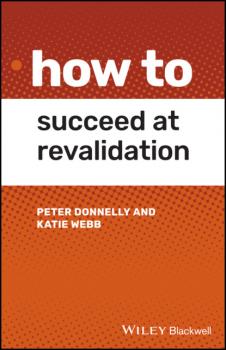John Wiley & Sons Limited
Все книги издательства John Wiley & Sons LimitedWetlands Conservation
Wetlands Conservation An up-to-date overview of approaches for addressing wetlands degradation and its effects on ecosystem services, human health, and other ecosystems Wetlands are essential sources of biodiversity, water purification, groundwater replenishment, flood control, storm protection, sediment retention, recreation and tourism, and more. Human exploitation of natural resources over the past 200 years has caused significant wetlands degradation and loss. Although the Ramsar Convention of 1971 drafted polices for wetland conservation and responsible use, many wetland sites remain inadequately conserved or managed. Maintaining the ecological balance and equilibrium of wetlands requires a clear understanding of the vital role of wetlands, the difficulties they face, and the policies enacted for their protection. Wetlands Conservation: Current Challenges and Future Strategies summarizes both current and emerging management strategies, trends, and policies regarding wetlands protection around the world. The authors provide accurate scientific information on wetlands while discussing the effects of climate change, global warming, modernization in agriculture, and other key topics. Designed to assist in the development of future solutions for wetlands conservation and management strategies, this important volume: Highlights the environmental, socioeconomic, and cultural importance of wetlands Identifies the factors responsible for the failure of many conservation initiatives Describes the natural and anthropogenic factors of wetlands degradation Discusses the role of community-based wetlands conservation and management Explores Ramsar wetlands conservation and its impacts worldwide Wetlands Conservation: Current Challenges and Future Strategies is an invaluable resource for graduate and postgraduate students, researchers, ecologists, policymakers, conservation organizations, and others working in the field of natural resources management.
Value-Based Fees
The latest edition of the leading guide to consulting engagement pricing, from the “Rock Star of Consulting” Alan Weiss In the newly revised Third Edition of Value-Based Fees: How to Charge – and Get – What You’re Worth , best-selling author, speaker and renowned consultant Dr. Alan Weiss delivers a thoroughly updated guide to proposing, and receiving, consistently high fees that are based on the value you deliver to each client you serve. The author walks you through the many reasons that time-and-materials pricing models are outdated and inadequate and how to convert existing clients to your new value-based fee model. He also discusses fundamental new developments in consulting, including the remote delivery of services, the waning market power of the consulting giants, economic globalization, and the shift from project work to advisory work. Among the step-by-step techniques and strategies provided in the book, you’ll find: How to establish value-based fees, including determining your unique value and creating a “good deal” dynamic How to create, capitalize on, and market to trusted advisor relationships How to implement fee increases immediately, prevent and rebut fee objections, create consulting products, and explore lucrative new fields Perfect for newcomers to the consulting field as well as time-tested veterans, Value-Based Fees is an indispensable guide for every solo consultant, entrepreneur, and small consulting firm.
Hydrogeology
HYDROGEOLOGY Hydrogeology: Principles and Practice provides a comprehensive introduction to the study of hydrogeology to enable the reader to appreciate the significance of groundwater in meeting current and future environmental and sustainable water resource challenges. This new edition has been thoroughly updated to reflect advances in the field since 2014 and includes over 350 new references. The book presents a systematic approach to understanding groundwater starting with new insights into the distribution of groundwater in the Earth’s upper continental crust and the role of groundwater as an agent of global material and elemental fluxes. Following chapters explain the fundamental physical and chemical principles of hydrogeology, and later chapters feature groundwater field investigation techniques in the context of catchment processes, as well as chapters on groundwater quality and contaminant hydrogeology, including a section on emerging contamination from microplastic pollution. Unique features of the book are chapters on the application of environmental isotopes and noble gases in the interpretation of aquifer evolution, and a discussion of regional characteristics such as topography, compaction and variable fluid density on geological processes affecting past, present and future groundwater flow regimes. The last chapter discusses future challenges for groundwater governance and management for the long-term sustainability of groundwater resources, including the role of managed aquifer recharge, and examines the linkages between groundwater and climate change, including impacts on cold-region hydrogeology. Given the drive to net-zero carbon emissions by 2050, the interaction of groundwater in the exploitation of energy resources, including renewable resources and shale gas, is reviewed. Throughout the text, boxes and a set of colour plates drawn from the authors’ teaching and research experience are used to explain special topics and to illustrate international case studies ranging from transboundary aquifers and submarine groundwater discharge to the hydrogeochemical factors that have influenced the history of malting and brewing in Europe. The appendices provide conversion tables and useful reference material, and include review questions and exercises, with answers, to help develop the reader’s knowledge and problem-solving skills in hydrogeology. This highly informative and accessible textbook is essential reading for undergraduate and graduate students primarily in earth sciences, environmental sciences and physical geography with an interest in hydrogeology or groundwater topics. The book will also find use among practitioners in hydrogeology, soil science, civil engineering and landscape planning who are involved in environmental and resource protection issues requiring an understanding of groundwater.
How to Succeed at Revalidation
Doctors in the UK are required to provide evidence of their fitness to practice—all doctors registered with the General Medical Council (GMC) need to revalidate to maintain their registration. How to Succeed at Revalidation contains up-to-date information on the current regulatory framework and step-by-step guidance to the entire revalidation process. Offering expert advice on how to undertake the process from the perspective of the appraisee, the appraiser, and the employer, this practical, quick-reference guide covers each of the Good Medical Practice (GMP) domains: Knowledge, Skills and Performance; Safety and Quality; Communication, Partnership and Team Work; and Maintaining Trust. Throughout the text, numerous examples describe different models of appraisal and reflection, identify activities that map to each domain, and demonstrate how revalidation requirements can be achieved in the course of daily practice. This much-needed guide: Covers regulatory processes in medicine and healthcare from both UK and international perspectives Reviews the background that led to the implementation of revalidation Discusses the new GMP requirements for all doctors in the UK Explores the possible future of revalidation How to Succeed at Revalidation is essential reading for all qualified and trainee doctors, undergraduate and postgraduate learners, tutors and trainers seeking to navigate the revalidation process in the UK.
Information Security
INFORMATION SECURITY Provides systematic guidance on meeting the information security challenges of the 21st century, featuring newly revised material throughout Information Security: Principles and Practice is the must-have book for students, instructors, and early-stage professionals alike. Author Mark Stamp provides clear, accessible, and accurate information on the four critical components of information security: cryptography, access control, network security, and software. Readers are provided with a wealth of real-world examples that clarify complex topics, highlight important security issues, and demonstrate effective methods and strategies for protecting the confidentiality and integrity of data. Fully revised and updated, the third edition of Information Security features a brand-new chapter on network security basics and expanded coverage of cross-site scripting (XSS) attacks, Stuxnet and other malware, the SSH protocol, secure software development, and security protocols. Fresh examples illustrate the Rivest-Shamir-Adleman (RSA) cryptosystem, elliptic-curve cryptography (ECC), SHA-3, and hash function applications including bitcoin and blockchains. Updated problem sets, figures, tables, and graphs help readers develop a working knowledge of classic cryptosystems, modern symmetric and public key cryptography, cryptanalysis, simple authentication protocols, intrusion and malware detection systems, quantum computing, and more. Presenting a highly practical approach to information security, this popular textbook: Provides up-to-date coverage of the rapidly evolving field of information security Explains session keys, perfect forward secrecy, timestamps, SSH, SSL, IPSec, Kerberos, WEP, GSM, and other authentication protocols Addresses access control techniques including authentication and authorization, ACLs and capabilities, and multilevel security and compartments Discusses software security issues, ranging from malware detection to secure software development Includes an instructor’s solution manual, PowerPoint slides, lecture videos, and additional teaching resources Information Security: Principles and Practice, Third Edition is the perfect textbook for advanced undergraduate and graduate students in all Computer Science programs, and remains essential reading for professionals working in industrial or government security.









